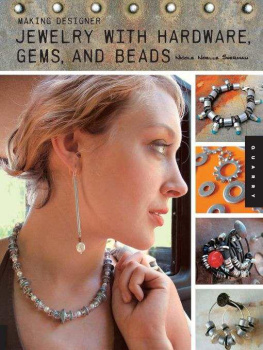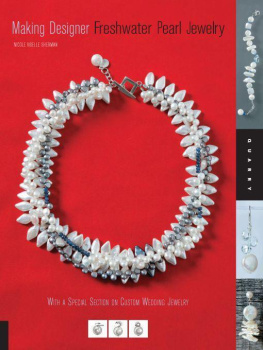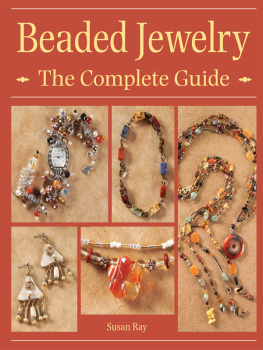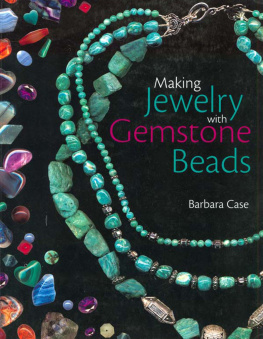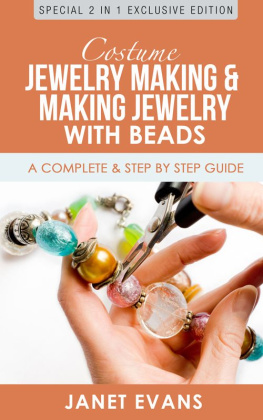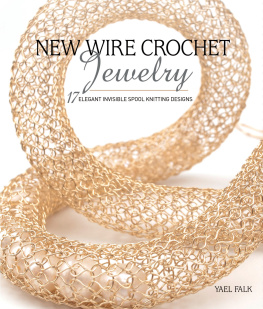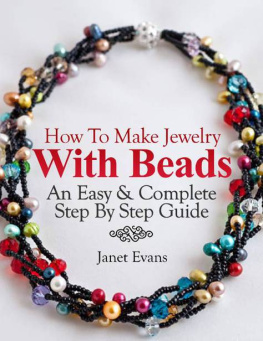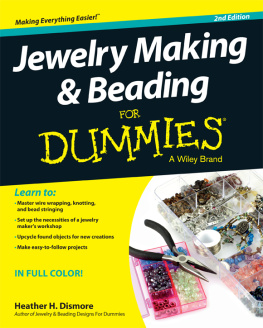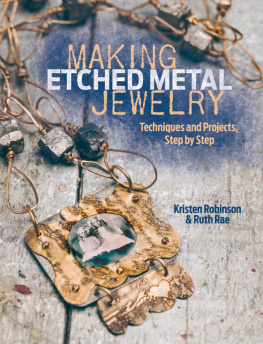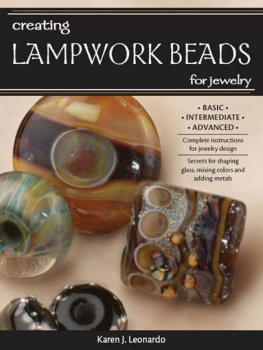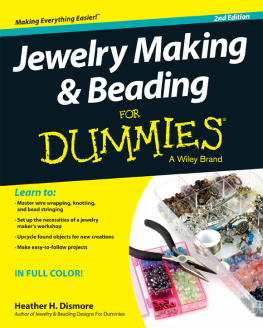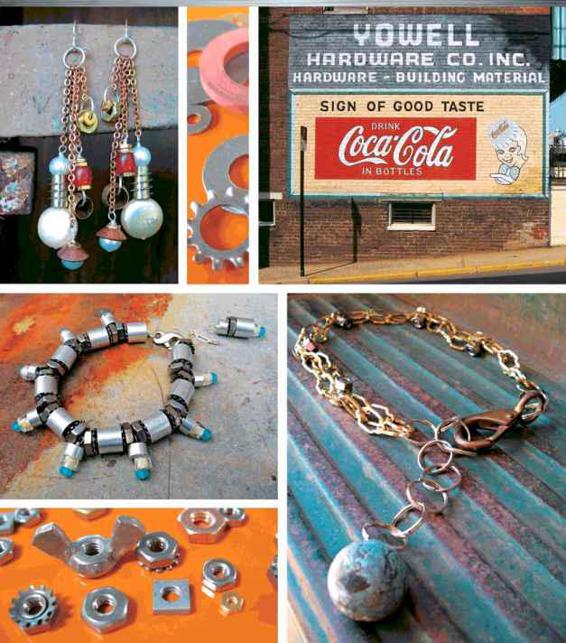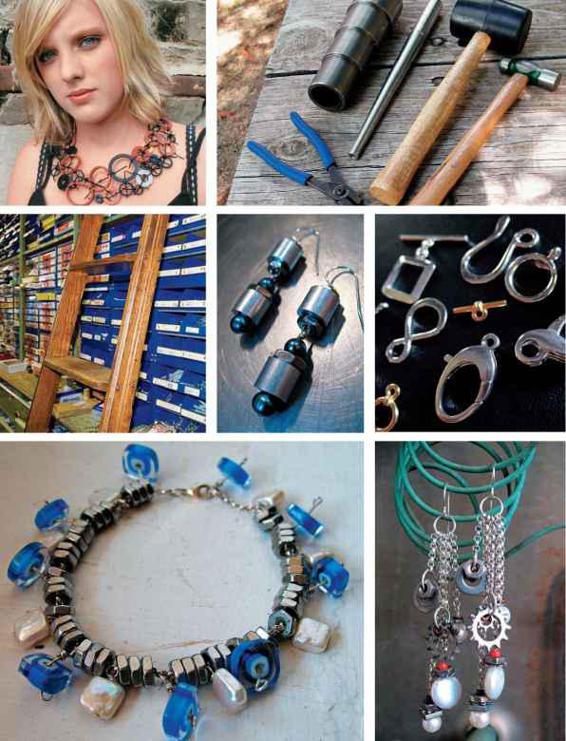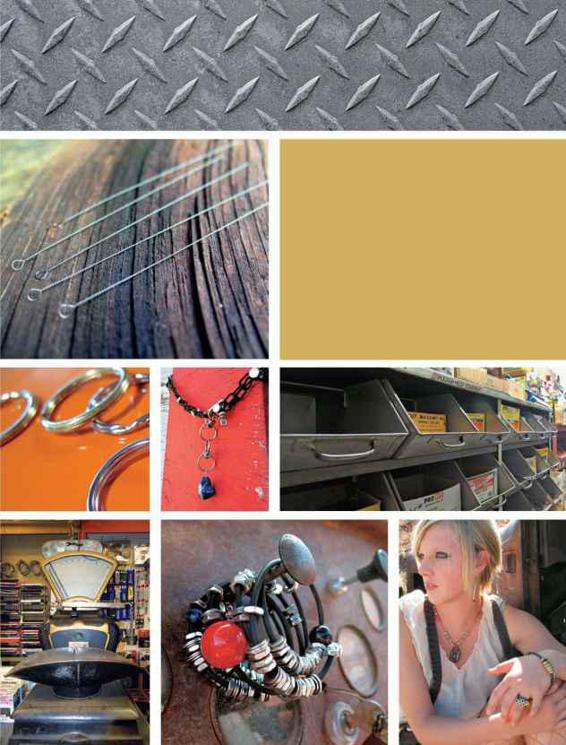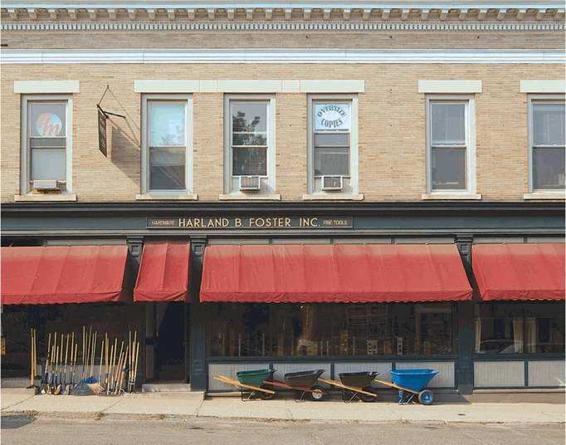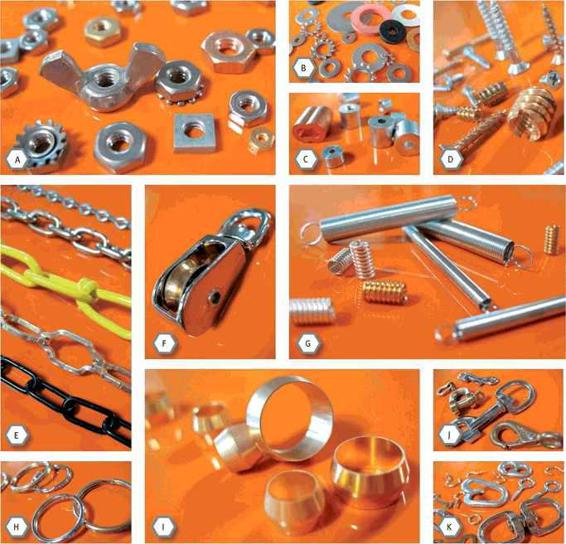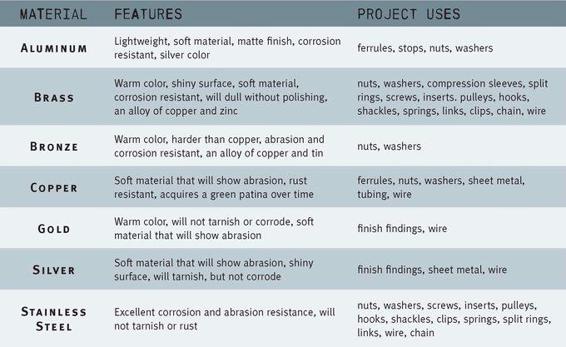Table of Contents
2008 by Quarry Books
All rights reserved. No part of this book may be reproduced in any form without written permission of the copyright owners. All images in this book have been reproduced with the knowledge and prior consent of the artists concerned, and no responsibility is accepted by the producer, publisher, or printer for any infringement of copyright or otherwise, arising from the contents of this publication. Every effort has been made to ensure that credits accurately comply with information supplied. We apologize for any inaccuracies that may have occurred and will resolve inaccurate or missing information in a subsequent reprinting of the book.
First published in the United States of America by
Quarry Books, a member of
Quayside Publishing Group
100 Cummings Center
Suite 406-L
Beverly, Massachusetts 01915-6101
Telephone: (978) 282-9590
Fax: (978) 283-2742
www.quarrybooks.com
Library of Congress Cataloging-in-Publication Data
Sherman, Nicole Noelle.
Making designer jewelry with hardware, gems, and beads / Nicole Noelle Sherman.
p. cm.
ISBN 1-59253-422-8
1. Jewelry making. 2. Wire craft. I. Title.
TT212.S543 2008
739.27--dc22
2007048906
ISBN-13: 978-1-59253-422-7
ISBN-10: 1-59253-422-8
10 9 8 7 6 5 4 3 2 1
Design: Emily Brackett/Visible Logic
All photography by Lexi Boeger with the exception of exteriors and interiors of hardware
stores by William H. Sherman.
Illustrations: Judy Love
Printed in Singapore
TO ALL OF THE GREAT OLD HARDWARE STORES STILL IN BUSINESS.
MAY THEY SURVIVE, THRIVE, AND CONTINUE TO INSPIRE! TO ALL THE GRANDFATHERS I HAVE KNOWN OR JUST IMAGINED.
INTRODUCTION
I grew up in a classic New England small town, white clapboard houses with dogs and kids running loose. The center of the village, as we called it, had a church, a community center, an elementary school, and a library. Just off of the green was a strip of retail stores that included two of my favorites, a drugstore with a soda fountain counter and a hardware store. Many of my best times were spent in one of these two spots. On Saturdays, my mom would bring her three daughters to the drugstore counter for grilled cheese and milkshakes. I always got vanilla. This was a great outing; my mom always said it was a blast from her past. But my favorite Saturdays were the ones when my grandfather, Papa, joined us.
As the youngest girl, I got to go next door to the hardware store after lunch with Papa. Im not sure I even remember where my sisters went; all other reality vanished when I stepped through the doors into that magical world. Papa would usually have some reason for being there, some small part he needed, but I knew that he would spend quite a bit of the day chatting with the owner and other customers. He would have a soda and sit in the chair by the window. His friendliness gave me what I needed, the ability to roam and explore without concern for time. My love affair with hardware had begun.
At first I was just a voyeur; I would look for hours through the aisles, contemplating the use for various drill bits and sections of pipe. When the owner began to trust me, he would let me rummage freely, knowing I wouldnt mix up the 16-penny framing nails with the 8-penny finish nails. By the time I was nine, I spent less time randomly searching; I now had a clear purpose and knew what I wanted. My path was direct; I avoided the paint section and went straight for the buckets and bins. Countless small drawers slid open to reveal their mysteries: fancy wing nuts, brass clamps, sliding latches and a multitude of sizes of simple nuts and bolts. I didnt have to wonder about the uses for this hardware, I knew immediately what they were made for.
Necklaces of hex nuts and washers, strung on bits of twine or leather strapping, began to appear around my neck. I made bracelets for all my best friends, fashioning new creations from leftover bits that had long since lost their meaning. A pipe clamp became a ring, until my finger started to turn strange and frightening colors. I even made jewelry for my dog; the cat wasnt as patient. Soon my sisters began commissioning new work.
I had found my destiny. I was an artist.
CHAPTER
GETTING STARTED
A VISIT TO THE HARDWARE STORE
The classic hardware store is the embodiment of organized disarray. At first glance, it appears to have no structure, but on closer inspection, a clearly discernable hierarchy of organization emerges. Plumbing is separate from electrical, wire and cable have their own aisle with various types of ropes and string, and hand tools are distinct from power tools. The section of fasteners (nuts/bolts, screws, nails) could occupy a creative spirit for hours. There is also specialty hardware for doors, windows, and cabinets. Paint, garden supplies, and miscellaneous household goods often round out the inventory. Fishing tackle and boat hardware are also quite adaptable. Go spend an afternoon and see what inspires you.
PIECES AND PARTS
The following are a few of my favorite supplies that I use on a regular basis. Most of the hardware featured can be categorized as fasteners, but a lot of hardware is adaptable to jewelry design.
A- Nuts
B- Washers
C- Ferrules and stops
D- Screws and threaded inserts
E- Chain
F- Pulley
G- Springs
H- Split Rings
I- Compression sleeves
J- Shackles and clips
K- Hooks and links
METAL 101: KNOW YOUR MATERIALS
Not all hardware is made of metal, but if you spend enough time in a hardware store you will begin to see the importance of knowing the different features and possible uses for metal. Your choice of metal will be influenced by additional elements in your piece, such as the color of gemstones or beads, and also will be dictated by the design. Some metal is easier to form, and some is more resistant to abrasion or corrosion. The following chart indicates the more pertinent features of metal for the jewelry projects in this book and shows the types of hardware for each metal that I regularly use in my designs.
Note on metals not used in this book:
Some materials, such as galvanized steel and iron, have coatings that prevent rust or corrosion. Zinc, tin, and chromium are often used as coatings on ferrous metal. The coatings, if scratched or abraded over time, can cause the underlying metal to be exposed and leave your jewelry unprotected. Nickel is a hard material with a shiny surface and is highly resistant to corrosion. Stainless steel is used where nickel might be considered, it is more readily available, and its surface will not dull over time. Titanium and platinum are two of the most durable metals. Titanium has a very high strength-to-weight ratio, having the same strength of other metals at half the weight. Both titanium and platinum will not tarnish, abrade, or corrode. Titanium is visually similar to aluminum and not readily available. Platinum is also not used for projects in this book, but only because it is generally cost prohibitive.

